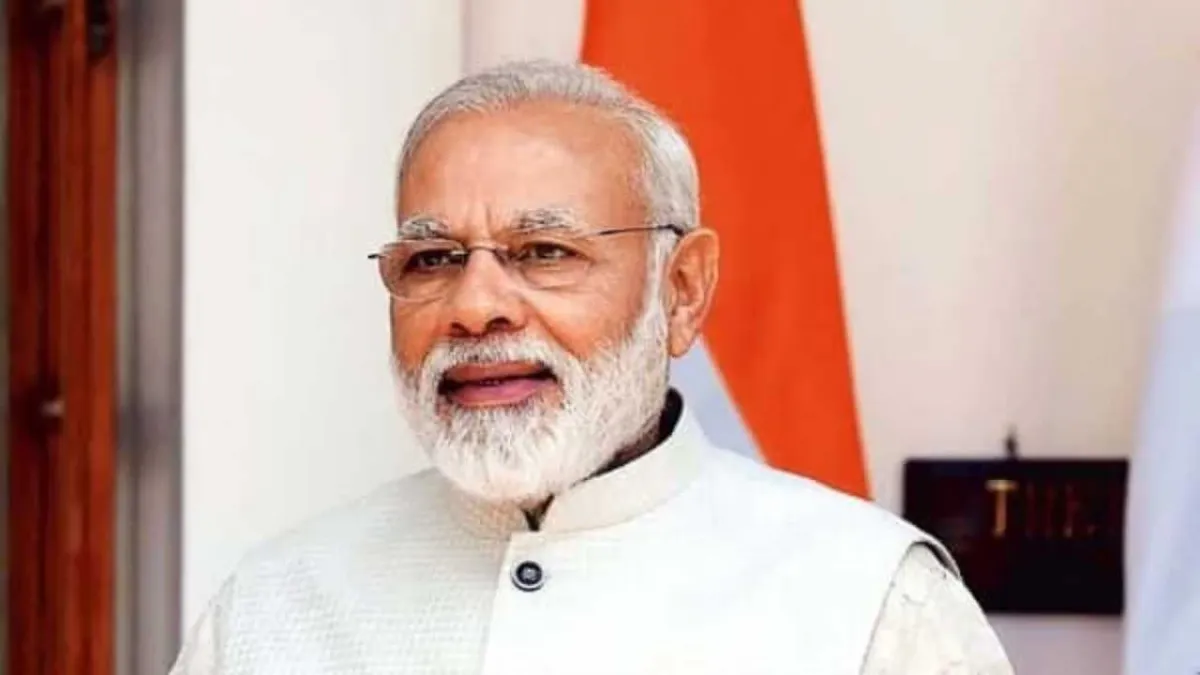Prime Minister Narendra Modi will visit Bihar and West Bengal on Friday to lay the foundation stone, inaugurate, and dedicate development projects worth over ₹12,000 crore to the nation. These projects span multiple sectors, including railways, roads, gas, energy, fisheries, IT, and rural development.
Modi will first arrive in Bihar, where he will dedicate railway, road, rural development, fisheries, electronics, and IT-related projects worth over ₹7,200 crore in Motihari. Following this, he will address a public gathering.
In line with his commitment to improving connectivity and infrastructure, the Prime Minister will dedicate several railway projects to the nation. These include automated signaling on the Samastipur-Bachhwara rail line, enhancing operational efficiency. The doubling of the Darbhanga-Thalwara and Samastipur-Rambhadrapur rail lines, part of the ₹580 crore Darbhanga-Samastipur doubling project, will increase capacity and reduce delays.
To boost road infrastructure, Modi will lay the foundation stone for the 4-lane Ara Bypass on National Highway 319. This will connect Ara-Mohania NH 319 and Patna-Buxar NH 922, ensuring seamless travel and reducing commute time.
He will also inaugurate the 4-lane Pararia-Mohania section of NH 319, costing over ₹820 crore, which links Ara to the Golden Quadrilateral (NH 2), improving freight and passenger movement. Additionally, a 2-lane paved road from Sarwan to Chakai on NH 333C will be inaugurated, enhancing connectivity between Bihar and Jharkhand.
Under the Deendayal Antyodaya Yojana-National Rural Livelihood Mission (DAY-NRLM), Modi will disburse ₹400 crore to nearly 61,500 self-help groups (SHGs) in Bihar, with a focus on women-led development. He will also hand over keys to PMAY-Gramin beneficiaries and release over ₹160 crore for 40,000 rural housing beneficiaries.
Four new Amrit Bharat trains will be flagged off, connecting Patna to New Delhi, Motihari to Delhi, Darbhanga to Lucknow, and Malda Town to Lucknow via Bhagalpur, improving regional connectivity.
Later, Modi will visit West Bengal to dedicate projects worth over ₹5,000 crore in Durgapur, including the foundation stone for BPCL’s ₹1,950 crore City Gas Distribution (CGD) project in Bankura and Purulia districts. This will provide PNG connections to households and industries while creating jobs.
He will also dedicate the Durgapur-Haldia natural gas pipeline’s Durgapur-Kolkata section (132 km), part of the PM Urja Ganga project, and pollution control retrofits (FGD systems) at Durgapur Steel Thermal Power Station and Raghunathpur Thermal Power Station, costing ₹1,457 crore, to promote clean energy.
Additionally, the doubling of the Purulia-Kotshila rail line (36 km, ₹390 crore) will be inaugurated, improving industrial connectivity between Jamshedpur, Bokaro, Dhanbad, Ranchi, and Kolkata while reducing travel time.
Motihari
Motihari is a historic town in Bihar, India, best known as the place where Mahatma Gandhi launched his first Satyagraha (nonviolent resistance) movement in 1917, advocating for the rights of indigo farmers. It is also the birthplace of renowned author George Orwell, who was born there in 1903 when his father served in the British colonial administration. Today, Motihari is a growing cultural and economic center with ties to India’s independence movement and colonial history.
Samastipur-Bachhwara rail line
The **Samastipur-Bachhwara rail line** is a historic railway route in Bihar, India, connecting Samastipur to Bachhwara. It was established during the British colonial era to facilitate the transport of goods, particularly agricultural produce and raw materials, in the region. Today, it remains an important local rail link, supporting both passenger and freight services in northern Bihar.
Darbhanga-Thalwara rail line
The **Darbhanga-Thalwara rail line** is a historic railway route in Bihar, India, connecting Darbhanga to Thalwara. It was established during the British colonial era to improve transportation and trade in the Mithila region. Today, it remains an important local rail link, serving passengers and fostering regional connectivity.
Samastipur-Rambhadrapur rail line
The **Samastipur-Rambhadrapur rail line** is a historic railway route in Bihar, India, primarily serving local transportation needs. It was developed during the British colonial era as part of the broader expansion of India’s railway network to connect rural and urban centers. Today, it remains an important link for passengers and freight in the region, though it is not as prominent as major trunk lines.
Ara Bypass
The **Ara Bypass** is a major road infrastructure project in Patna, Bihar, India, designed to reduce traffic congestion in the city by diverting vehicles around its periphery. It connects key areas like Danapur and Koilwar, improving regional transportation and economic activity. The bypass is part of broader efforts to modernize Bihar’s road network and enhance connectivity to neighboring districts.
Golden Quadrilateral
The **Golden Quadrilateral** is a major highway network in India, connecting the four major metropolitan cities: Delhi, Mumbai, Chennai, and Kolkata. Launched in 2001 as part of the National Highways Development Project (NHDP), it spans approximately 5,846 kilometers and significantly improved road transport and economic connectivity across the country. The project was a key infrastructure initiative aimed at boosting trade, tourism, and regional development.
Durgapur-Haldia natural gas pipeline
The **Durgapur-Haldia Natural Gas Pipeline** is a critical energy infrastructure project in India, commissioned in the late 1990s to transport natural gas from eastern regions to industrial hubs. Stretching approximately **310 km**, it connects Durgapur in West Bengal to Haldia, a major port and industrial area, supporting industries and power plants. The pipeline was developed by **GAIL (Gas Authority of India Limited)** to enhance energy accessibility and reduce reliance on coal in the region.
Purulia-Kotshila rail line
The Purulia-Kotshila rail line is a historic narrow-gauge railway in West Bengal, India, originally built during British colonial rule in the early 20th century to transport goods like coal and raw materials. It is part of the scenic **”Purulia Chhotanagpur Railway”** and is known for its picturesque route through forests, hills, and rural landscapes. Though less active today, it remains a nostalgic attraction for heritage railway enthusiasts.






